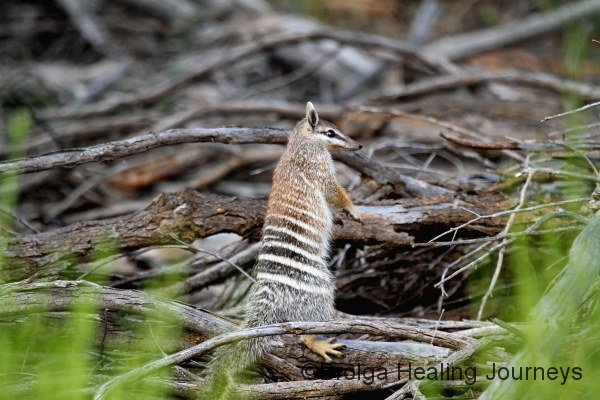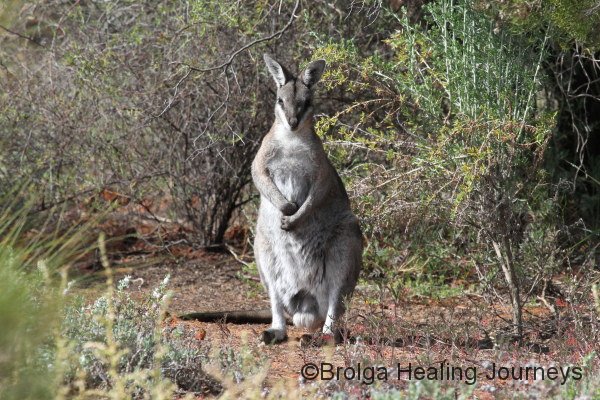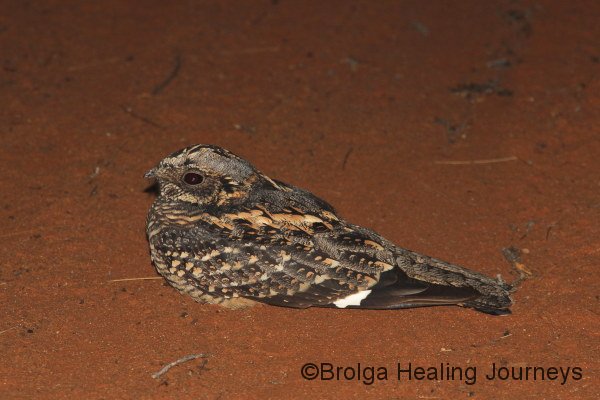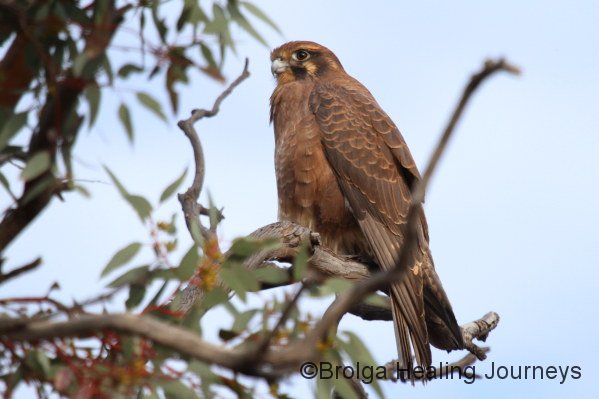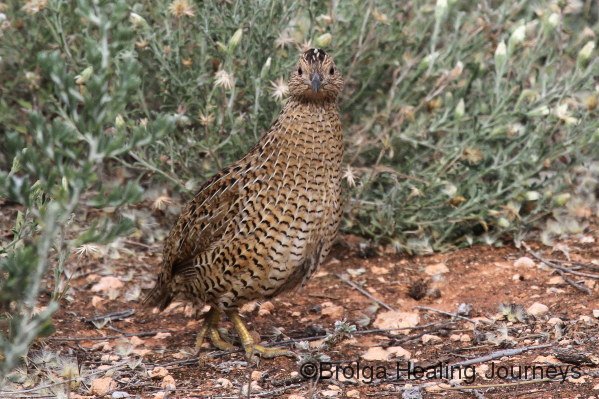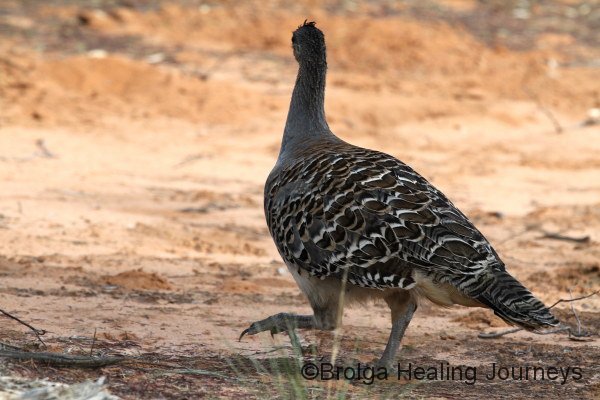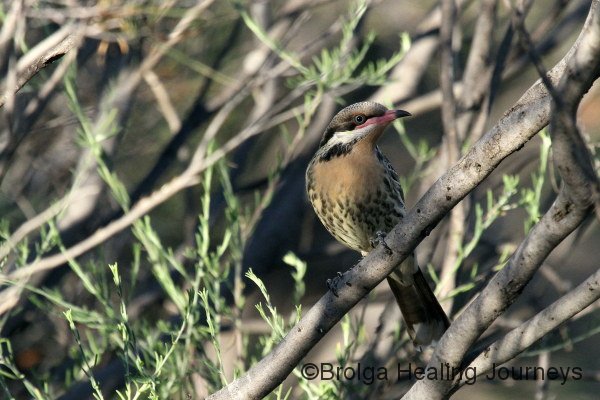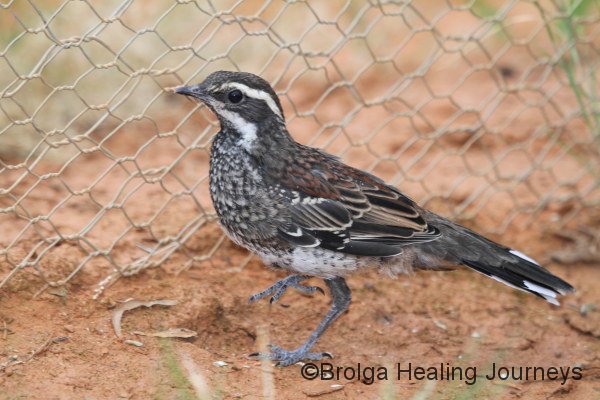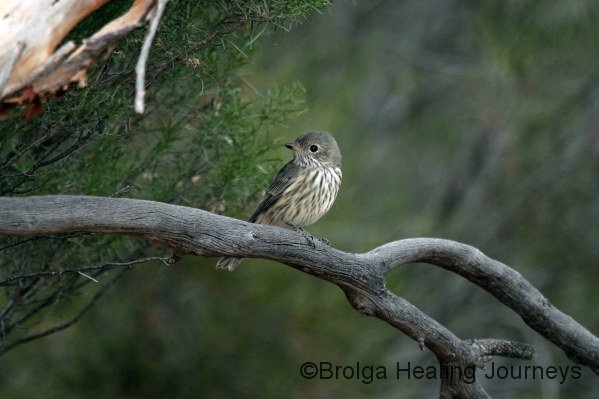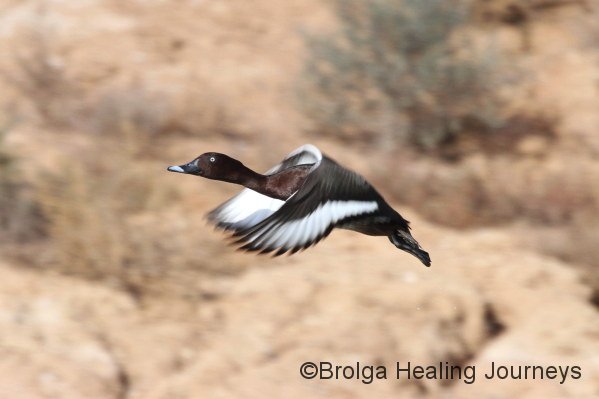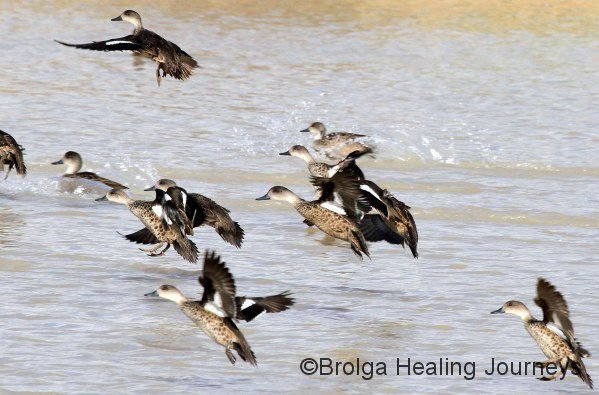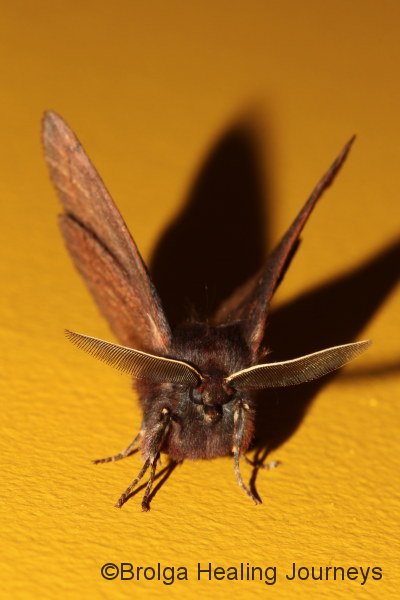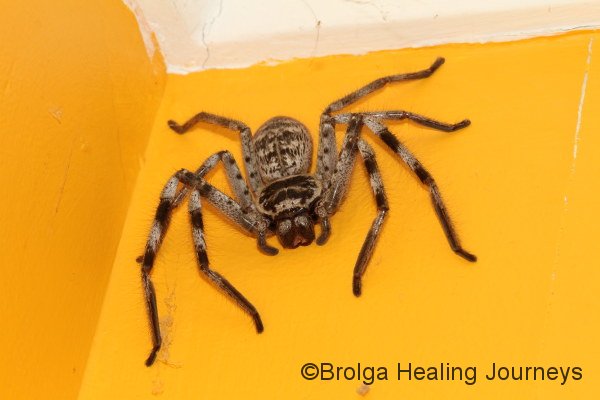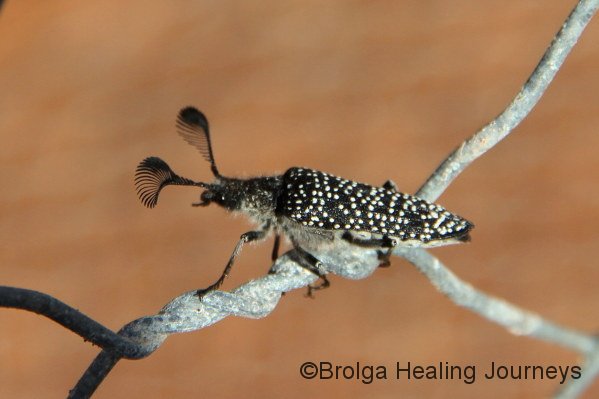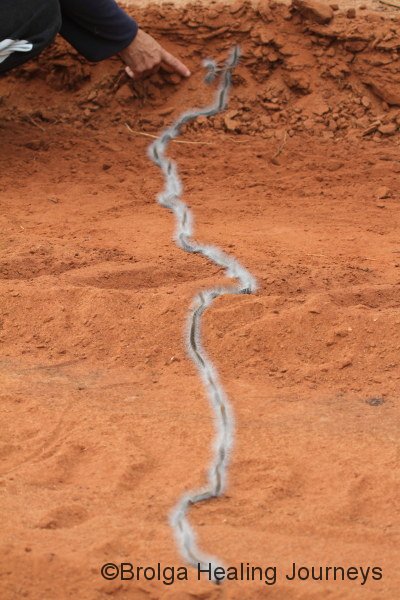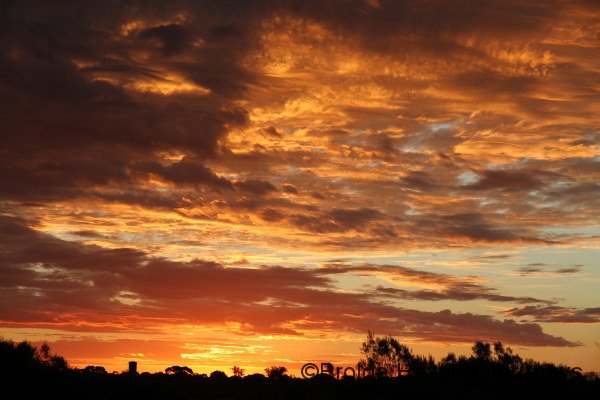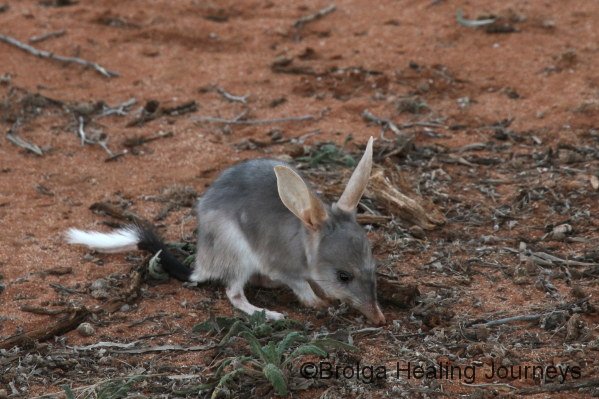Scotia Wildlife Sanctuary – mammal trapping and other adventures
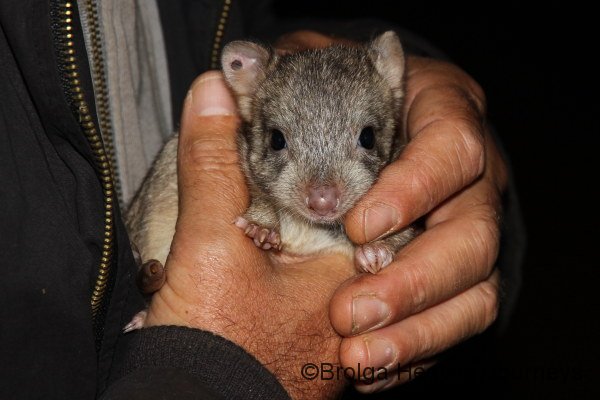
Our first stint as volunteers at Scotia Wildlife Sanctuary was last summer, in often stifling conditions. How’s 46.6 degrees sound? Despite those conditions, and maybe even partly because of them, we loved our first stay there.
We are happy to report that our second visit, in altogether cooler conditions (in fact, often cold), was just as interesting, rewarding and enjoyable. The main reason for this visit was for us to assist with the night-time mammal trapping, one of the many survey techniques employed by the Australian Wildlife Conservancy (AWC) to estimate the populations of re-introduced native mammals on the sanctuary.
The trapping took place over six nights, three nights for each of Scotia’s two large feral-proof enclosures in which a variety of endangered native mammals now live. Each enclosure measures 4000 hectares – large areas for a former city-slicker like me to get his head around – allowing the creatures concerned to live naturally, free from predation by feral cats and foxes. The enclosures really provide us with an idea of how the country looked before European settlers unleashed their animals and agricultural practices upon the land.
Anyway, back to the trapping survey…
You might well ask, who in their right mind would climb out of bed at around 11pm on an icy night, head out into the field and stay there until the sun was up, and tell you they loved it? And repeat the exercise for many nights. Craziness, you might say, perhaps quite rightly.
Well, such is the lot of a wildlife ecologist, or in our case, a couple of volunteers along to help them out. But there is a reward for such efforts, and that comes in the form of actually handling fascinating and beautiful creatures such as the Greater Bilby, the Boodie (Burrowing Bettong) and the Woylie (Brush-tailed Bettong), and in learning about their habits and behaviour. Holding a silken-furred young Bilby, or irresistible Boodie joey in your hands is a rare privilege.
In case you are wondering, the reason for the odd hours was that we were trapping nocturnal marsupials, and the AWC was keen to have all animals processed and released before dawn, so they could safely return to their burrows or nests while it was still dark. It would have been very stressful for the animals to be still caged in daylight. So, for just under a week, we became nocturnal ourselves.

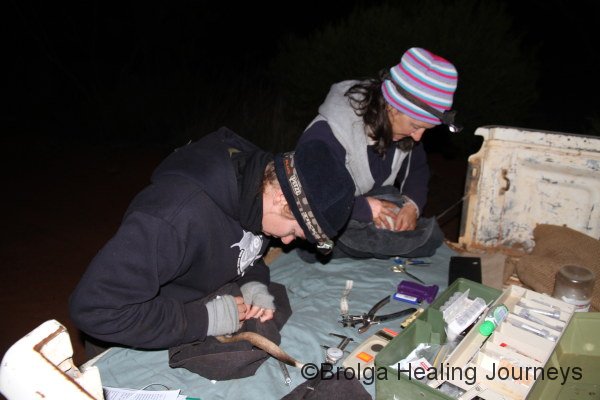
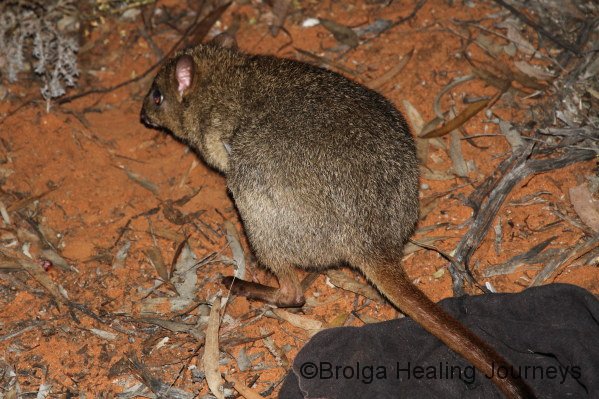
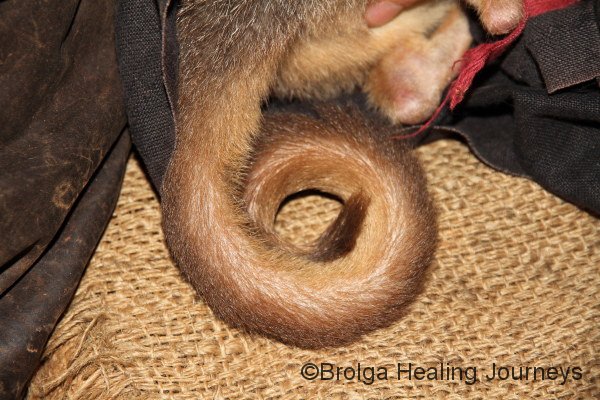
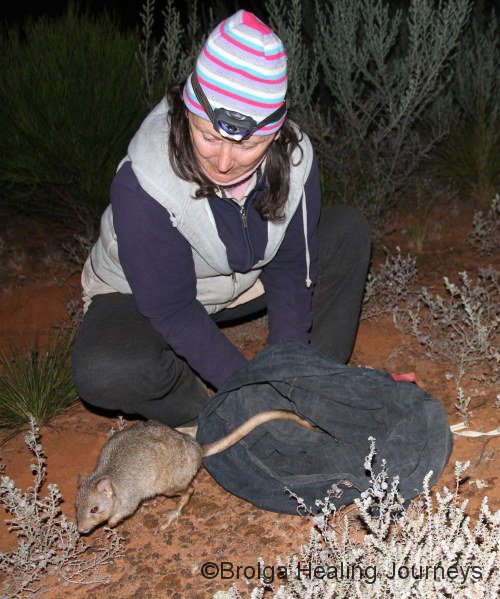
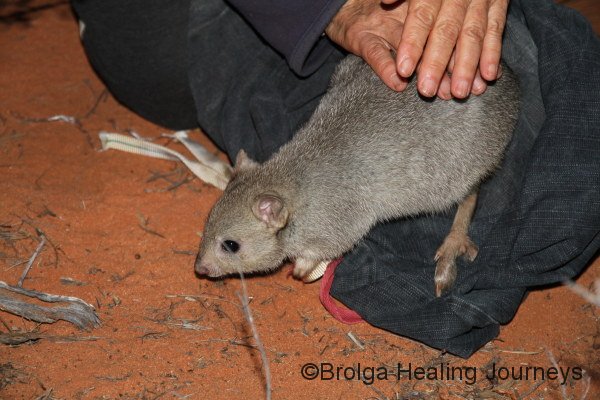
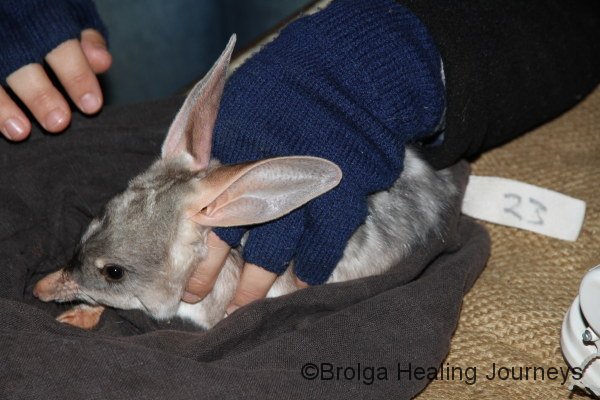
The trapping survey aids the AWC in its research to learn more about these creatures. Sadly, with so few of them left in the wild, relatively little is known about them, so the research being undertaken by the AWC is vital to their continued survival. The surveys also allow the AWC to estimate populations on the sanctuary. Without wishing to steal the AWC’s thunder, it would seem that the drought-breaking rains of the past year or so have had a very beneficial effect on populations.
The first part of the trapping was undertaken in Stage 2, the ‘wild north’ of Scotia, home to most of Scotia’s Woylie population. The Woylie is a highly strung but beautiful, small to medium sized marsupial. It is a small member of the kangaroo group, and hops along somewhat like a tiny roo. In fact, they resemble a little bouncing ball as they hop along. They are also extremely agile and speedy little things, providing novice researchers like Nirbeeja and me with quite a challenge to transfer them securely from the cage to a cloth bag, then hold them with just the right amount of pressure while you took measurements of tail circumference, the length of the hind foot, and other data for research. We didn’t want to hold them so tightly as to harm them, but if they are not held tightly enough they are, almost paradoxically, more likely to wriggle free and injure themselves or escape during processing. Under the able tutorship of ecologist Felicity, we soon got the hang of it. Once each Woylie was ‘processed’, they were released. This was greatly rewarding, watching as each little Woylie literally shot out of its bag to freedom. Trying to get a photo of the release of a spring-heeled Woylie proved quite a challenge.
In case you wonder how we would entice a nervous little Woylie into a cage, each trap was baited late afternoon with a delectable ball consisting of rolled oats, peanut butter and honey. Messy to make, but irresistable to marsupials. There were around a hundred trap sites spread throughout both stages, and the ecologists and volunteers were split into three groups, each with a set of designated sites. Most sites in stage 2 had one trap only, although one more heavily populated area had 3 per site.
Next, the group moved to Stage 1, where the focus of trapping was the Boodie. Although the Boodie is a similar sized Bettong, it has a totally different temperament to the Woylie. The Boodie, is stockier, generally far more laid back, and at times even stubborn. They have a tremendous appetite and so prove easy to trap, and in fact many individual Boodies were caught on each of the three trapping nights in Stage 1. Unlike the Woylies, which would explode from the cage into the waiting bag like a small furry cannonball, most Boodies would calmly walk into the bag. Except, of course, for a few stubborn individuals, for whom all manner of coaxing (talking, pleading, blowing air in their face until you became light-headed, etc etc) was required to get them into the bag. They are gorgeous little creatures, but as Nirbeeja discovered after a couple of bites, they have plenty of get up and go!
The Boodies as a species seem to love Scotia, and their population there is healthy to say the least. As a result, in order to get a robust estimate of their population, each site consisted of three cage traps, and on many occasions we would drive up to a site and notice three little faces peering out at us from the cages. Indeed, one of the other teams found five Boodies in their three traps at one site. Finding three full cages was a mixed blessing; on one hand it meant you would get to see more animals, but on the other it meant more processing, standing there in the early morning cold, keen to move ahead to process all the other sites before day-break.
Boodies also have the amusing habit of contacting each other vocally using a sound which is remarkably simlar to a little fart. You can imagine all the jokes that passed among the sleep-deprived crews as we encountered another group of “farting” Boodies. The Boodie is also a very social animal, living in large communal warrens, and members of a family group would often sit in the bushes near trapping sites waiting for their relatives to be processed and released; we knew this from the rustle and farting sounds from the nearby bushes.
And, of course, in both Stages it was a rare treat to find a Bilby in a trap, and be the person lucky enough to handle it during processing. These are unusual, beautiful and almost comical little creatures, apparently innocent to the world around them. Watching a Bilby run along the track, darting from side to side, with its tail flopping about, was a never-ending source of joy and amusement. In the feral proof enclosures of Scotia the Bilbies are thriving, but it was easy for us to see why they have so easily fallen prey to foxes and cats in greater Australia.
The trapping ended with us all feeling exhausted but satisfied, and our sleep patterns gradually returned to normal, for a while at least.
To view some video footage we took of this young Bilby at Scotia, please click on the following links:
httpv://www.youtube.com/watch?v=s4Hc3qDvWe8
httpv://www.youtube.com/watch?v=KyldO_HBkSU
As with our first visit to Scotia, we found plenty of excuses and projects to enable us to stay longer than we had initially planned.
We again helped out with the fence patrol to ensure the integrity of the feral proof fences. Interestingly, with the much cooler conditions on this visit, reptiles were virtually absent from the fence-line, whereas they were a common sight over summer.
We also helped out with a process known as ‘dusting’ the roads in the far south of Scotia, used to measure fox and cat activity in the areas of Scotia outside the feral proof fences. We both also helped with data entry relating to past survey work, and I discovered some latent carpentry skills in designing and building a drying cabinet for fox baits. All that needs be said about that is that I don’t anticipate a career as cabinet-maker any time soon, although I can say in my defence that the job was made more difficult by being restricted to using old and often warped timber.
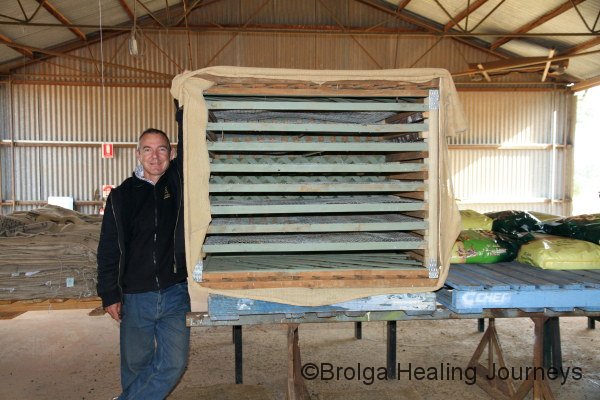
Anyone who knows Nirbeeja will appreciate her love of order and tidiness, so it was with a sense of relish that she was unleashed upon several store-rooms, charged with cleaning them up. They probably have never looked so good.
Next, we helped with some fencing work on a new enclosure in the southern, Stage 3 region of Scotia. Nirbeeja and I attached a wire ‘skirt’, or mesh, around the bottom of the fence to help make it feral-proof. We were supplied with a temperamental old air compressor on the back on a ute, to power the staple gun for attaching the mesh to the fence. This compressor was a challenge to get started and keep running, to say the least, leading to some strained shoulder muscles and plenty of expletives, all of which contributed to its being named ‘Aunty Jack’ as in, “I’ll rip your bloody arms off”. (Only people of a certain vintage will know the meaning of this!) Aunty Jack proved a worthy adversary, requiring plenty of attention, cajoling and at time abuse to keep her operating. This project was physically tiring but ultimately very satisfying.
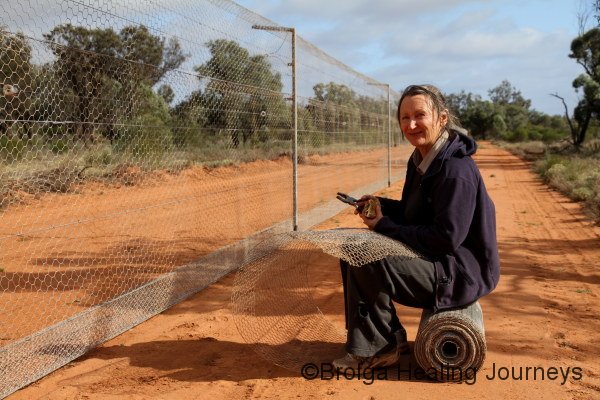

Finally, we helped Wildlife Ecologist Leah with some distance sampling, a fancy term for spot-lighting animals at night, where, fortunately, the aim is not to harm the animals but to collect data for population estimates, notably for Bilbies and Bridled Nail-Tail Wallabies. Driving around at night, peering into the bush along the beam of your hand-held spotlight in search of elusive marsupials for up to seven hours in cold conditions, may sound pretty tedious, but it was in fact a lot of fun. Nirbeeja and I shared plenty of laughs with Margarita, who is bravely learning to drive on Scotia’s ‘roads’, including driving during spot-lighting. A completely overgrown track rediscovered by Margarita during our spot-lighting was named in her honour!
During this stay at Scotia we resided in the Belah quarters, where we met many interesting people and made some new friends, in particular enjoying the company of Cam and Vince. Given Scotia’s isolation, the residents (inmates?) make their own fun and entertainment, and we enjoyed a number of gatherings during our stay, including a fantastic party for my birthday which, I must confess, left me in a decidedly fragile state the following day. Must have been something I ate.
Scotia is a special place, a sanctuary in every sense of the word for the marsupials which call it home. Places like Scotia give us hope that these species have a secure future. And a place such as Scotia would be far less effective without the dedicated, talented and friendly people we have met there during our visits.
Peter
19 June 2011
